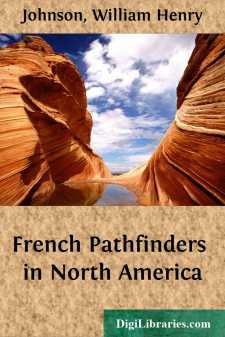Categories
- Antiques & Collectibles 13
- Architecture 36
- Art 48
- Bibles 22
- Biography & Autobiography 813
- Body, Mind & Spirit 138
- Business & Economics 28
- Children's Books 12
- Children's Fiction 9
- Computers 4
- Cooking 94
- Crafts & Hobbies 4
- Drama 346
- Education 46
- Family & Relationships 57
- Fiction 11821
- Games 19
- Gardening 17
- Health & Fitness 34
- History 1377
- House & Home 1
- Humor 147
- Juvenile Fiction 1873
- Juvenile Nonfiction 202
- Language Arts & Disciplines 88
- Law 16
- Literary Collections 686
- Literary Criticism 179
- Mathematics 13
- Medical 41
- Music 40
- Nature 179
- Non-Classifiable 1768
- Performing Arts 7
- Periodicals 1453
- Philosophy 64
- Photography 2
- Poetry 896
- Political Science 203
- Psychology 42
- Reference 154
- Religion 505
- Science 126
- Self-Help 81
- Social Science 81
- Sports & Recreation 34
- Study Aids 3
- Technology & Engineering 59
- Transportation 23
- Travel 463
- True Crime 29
French Pathfinders in North America
Categories:
Description:
Excerpt
THE ORIGIN AND DISTRIBUTION OF THE INDIAN RACE
America probably peopled from Asia.—Unity of the American Race.—The Eskimo, possibly, an Exception.—Range of the Several Groups.
In an earlier volume, "Pioneer Spaniards in North America," the probable origin of the native races of America has been discussed. Let us restate briefly the general conclusions there set forth.
It is the universal opinion of scientific men that the people whom we call Indians did not originate in the Western World, but, in the far distant past, came upon this continent from another—from Europe, some say; from Asia, say others. In support of the latter opinion it is pointed out that Asia and America once were connected by a broad belt of land, now sunk beneath the shallow Bering Sea. It is easy, then, to picture successive hordes of dusky wanderers pouring over from the old, old East upon the virgin soil of what was then emphatically a new world, since no human beings roamed its vast plains or traversed its stately forests.
Human wave followed upon wave, the new comers pushing the older ones on. Some wandered eastward and spread themselves in the region surrounding Hudson Bay. Others took a southeast course and were the ancestors of the Algonquins, Iroquois, and other families inhabiting the eastern territory of the United States. Still others pushed their way down the Pacific coast and peopled Mexico and Central America, while yet others, driven no doubt by the crowding of great numbers into the most desirable regions of the isthmus, passed on into South America and gradually overspread it.
Most likely these hordes of Asiatic savages wandered into America during hundreds of years and no doubt there was great diversity among them, some being far more advanced in the arts of life than others. But the essential thing to notice is that they were all of one blood. Thus their descendants, however different they may have become in language and customs, constitute one stock, which we call the American Race. The peoples who reared the great earth-mounds of the Middle West, those who carved the curious sculptures of Central America, those who built the cave-dwellings of Arizona, those who piled stone upon stone in the quaint pueblos of New Mexico, those who drove Ponce de Leon away from the shores of Florida, and those who greeted the Pilgrims with, "Welcome, Englishmen!"—all these, beyond a doubt, were of one widely varying race.
To this oneness of all native Americans there is, perhaps, a single exception. Some writers look upon the Eskimo as a remnant of an ancient European race, known as the "Cave-men" because their remains are found in caves in Western Europe, always associated with the bones of arctic animals, such as the reindeer, the arctic fox, and the musk-sheep. From this fact it seems that these primitive men found their only congenial habitation amid ice and snow. Now, the Eskimo are distinctly an arctic race, and in other particulars they are amazingly like these men of the caves who dwelt in Western Europe when it had a climate like that of Greenland....


